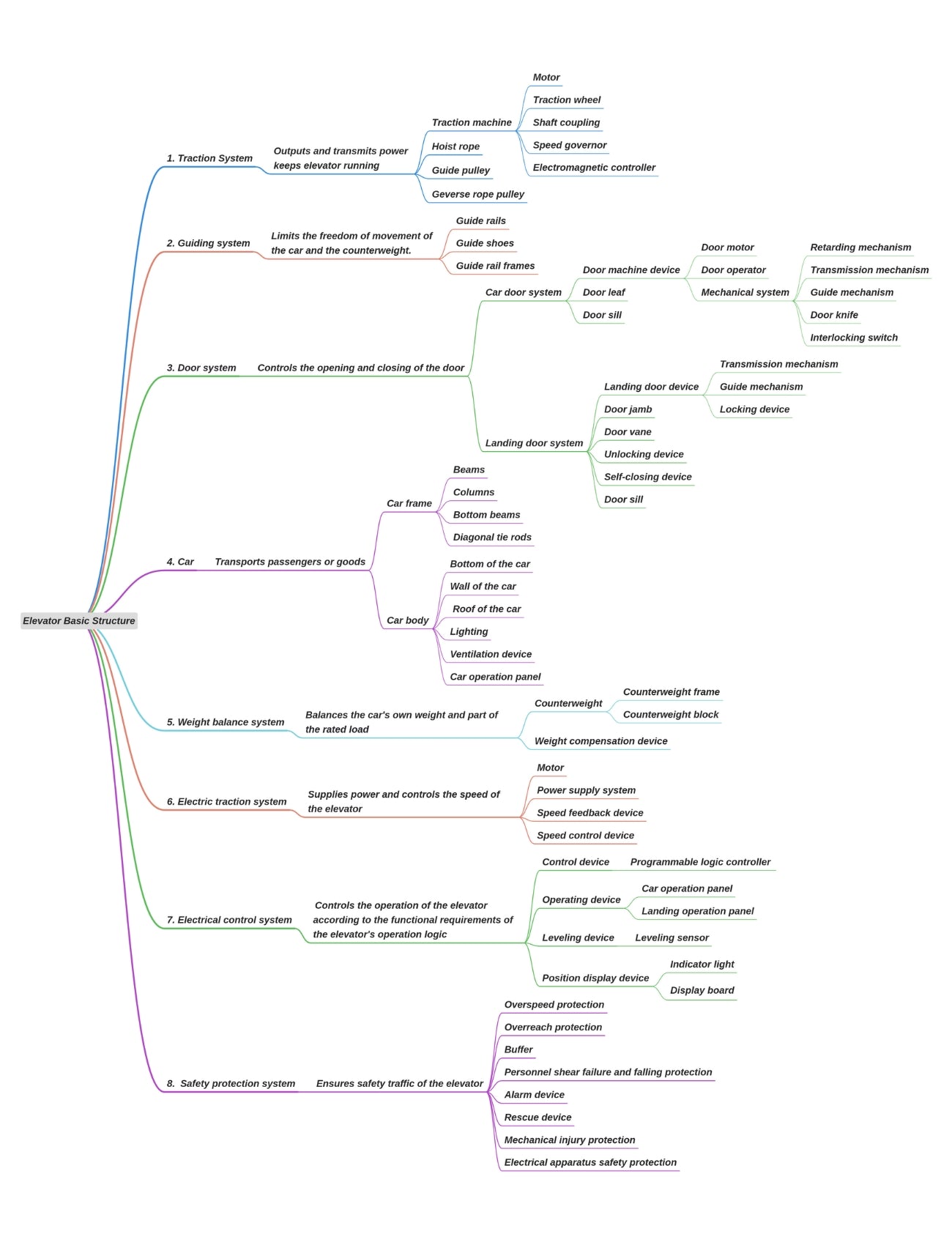Elevators are a common sight in buildings and are used to move people and objects between floors. Despite being an everyday part of modern life, many people may not be familiar with the basic structure of an elevator. In this article, we'll take a closer look at the main components of an elevator.
Index
1. Hoistway
2. Elevator Traction System
3. Elevator Car
4. Elevator Door
5. Elevator Suspension System
6. Elevator Counterweight
7. Hoisting mechanism
8. Electrical Control System
9. Safety Protection System
Hoistway: The hoistway is the vertical shaft or enclosure in which the elevator car moves up and down. The hoistway is typically lined with guide rails that help to keep the elevator car centered as it travels between floors.
Traction system: The traction system is the motor that drives the elevator, and it works in conjunction with the hoisting mechanism to move the elevator car up and down the hoistway. The traction system typically consists of a motor, a brake, and a gear system that converts the motor's rotational force into the linear motion required to move the elevator.
Car: The elevator car is the platform or box that carries passengers or objects from one level to another. Elevator cars come in different sizes and shapes depending on the building's needs.
Doors: The doors allow passengers to enter and exit the elevator car. They are typically located on both the hoistway and the car, and are designed to open and close automatically as the elevator arrives at each floor.
Suspension system: The suspension system consists of ropes, cables, or chains that attach the elevator car to the counterweight and the hoisting mechanism. The suspension system works with the hoisting mechanism to move the elevator car up and down the hoistway.
Counterweight: The counterweight is used to balance the weight of the elevator car and its contents. It is connected to the elevator car by the suspension system and moves up and down the hoistway in tandem with the car.
Hoisting mechanism: The hoisting mechanism is the machinery that moves the elevator car up and down the hoistway. It consists of a motor, brake, and other mechanical components that work together to move the elevator car between floors.
Electrical Control system: The electrical control system manages the operation of the elevator. It includes the buttons and switches used by passengers to call the elevator and select a destination floor, as well as the sensors and software that control the movement of the elevator car.
Safety features: Elevators are equipped with a range of safety features, including emergency brakes, overspeed governors, and interlocks that prevent the doors from opening when the elevator is not present. These features are designed to ensure the safety of passengers and prevent accidents.
By understanding the basic structure of an elevator, you can gain a better appreciation of how this essential piece of technology works. With proper maintenance and upkeep, elevators can provide safe and reliable transportation for many years to come.



